Kolossi - Crusader castle + sugar factory!
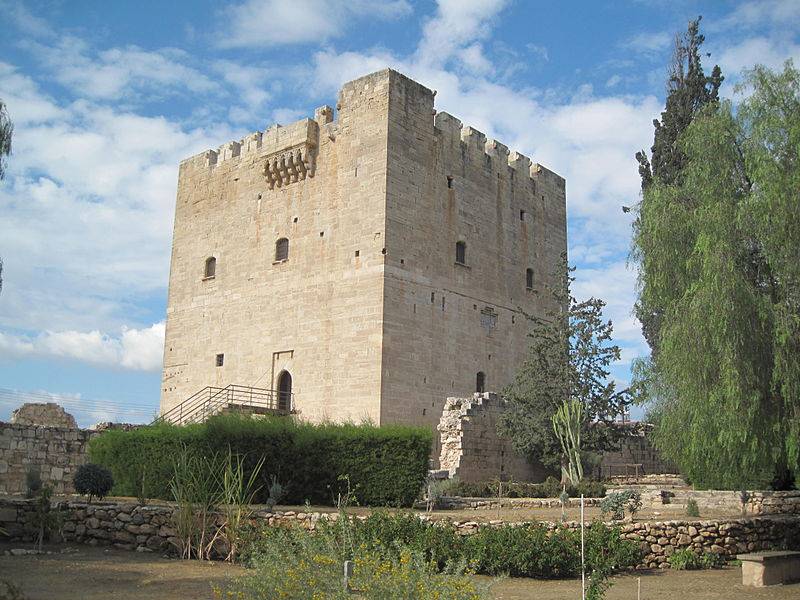
Here it is, Kolossi Castle, in all its glory.
In the courtyard of the castle there is a well, so the archaeologists believe that it is also older than, in fact, the castle of Kolossi. There is still water in it, and its level is about 7.5 meters! Once it adjoined a stone staircase in an old castle, of which only six steps remained.
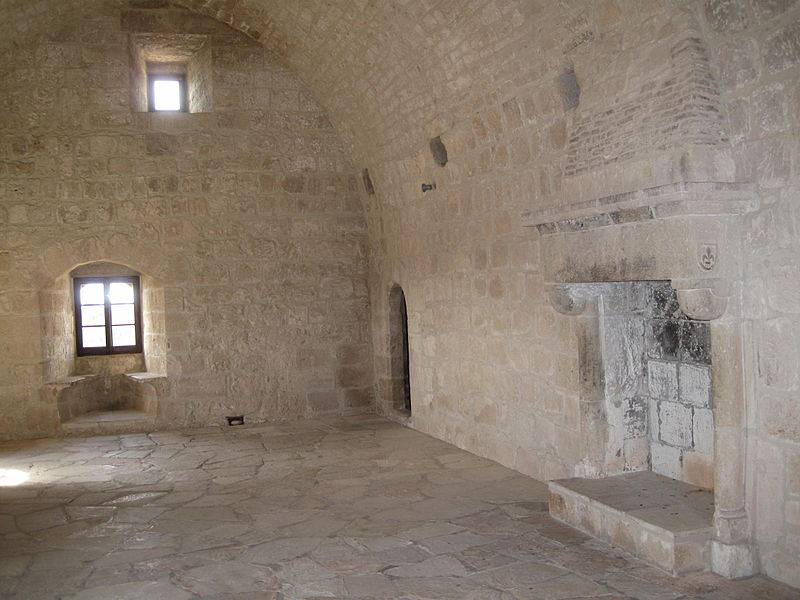
Here is the room inside the castle. Fireplaces are sealed, but the owner's coat of arms is visible from the side very well.
But the later part of the castle, belonging to the 15th century, was preserved just amazingly well! And this despite the strong earthquakes that now and then shake Cyprus. The height of the main tower 21 m, and the thickness of the walls in some places is one and a half meters!
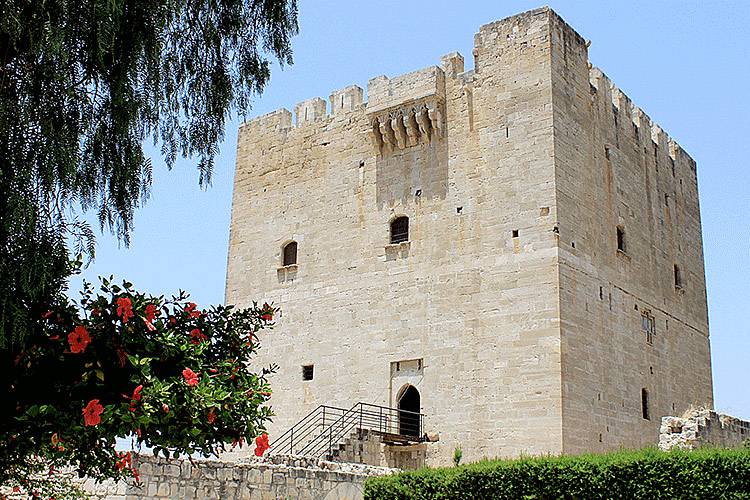
Actually, this castle has no walls, only this main tower remains!
The first floor of the castle was divided into three compartments and was used as a food warehouse. There are still in his two rooms are water tanks. But on the next two floors, huge fireplaces remained in the rooms, which were used not only for heating, but also to prepare food. On one of the fireplaces, the coat of arms of Louise De Maniaca, who led the construction of the castle in 1454, is still visible.
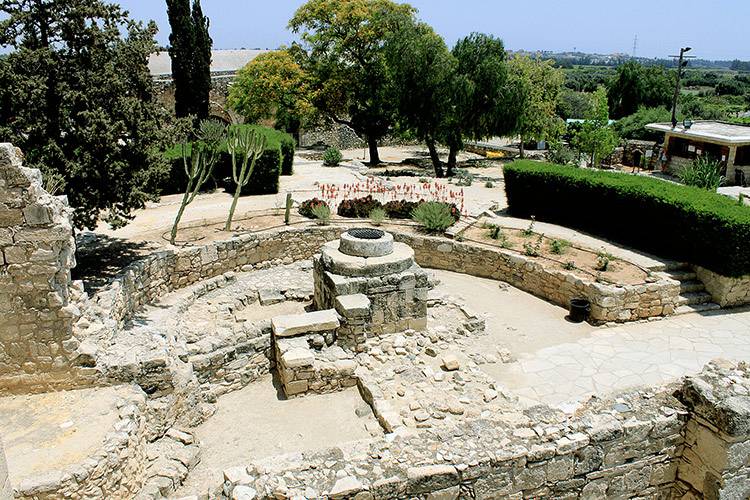
Well.
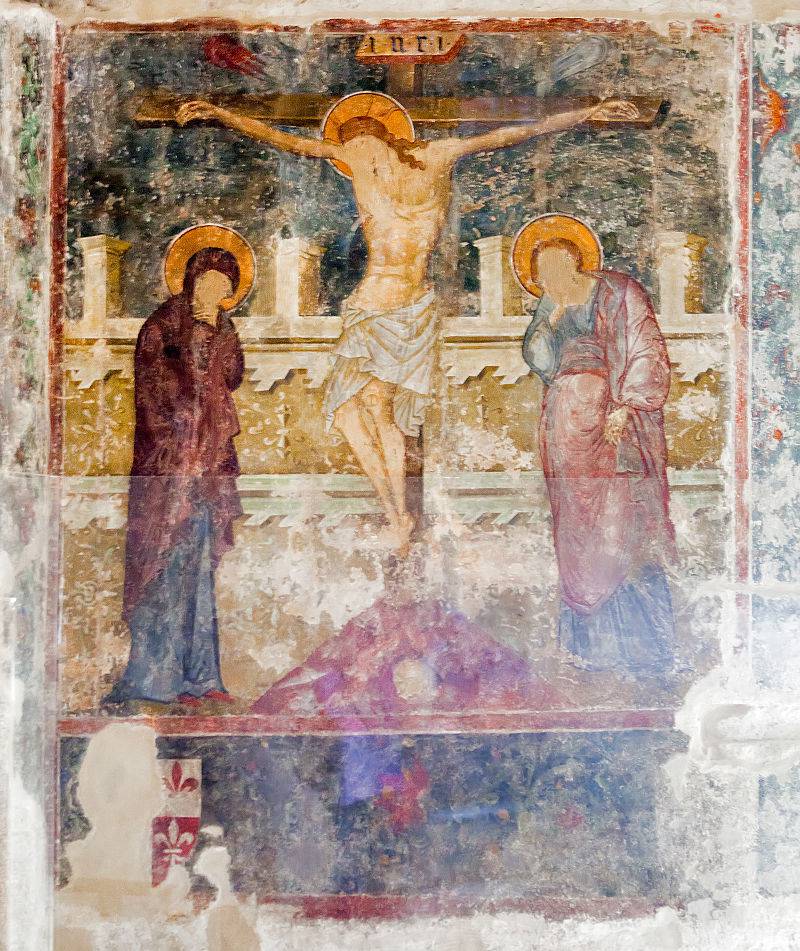
On the second floor of the castle you can see a huge pictorial fresco (2.5 X 2.5 meters) with a crucifixion scene and images of Jesus Christ, the Virgin Mary and St. John. And in the lower left corner you can see the coat of arms of Luis de Maniac, so that people would not forget who his builder was!
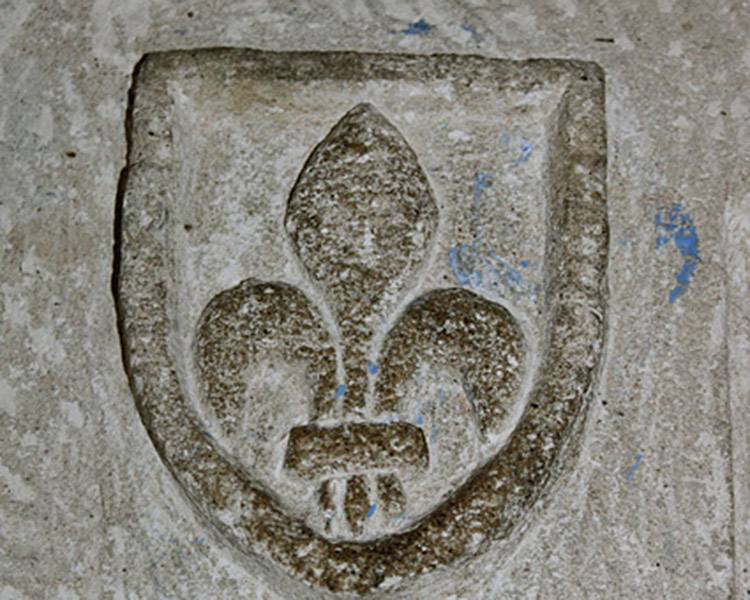
Here it is - this coat of arms. What is not easier, so ... ancient!
As in many medieval European castles, the first floor did not have a turn to the second. There led a bridge, thrown from the stairs, and it was the only entrance up. The bridge itself was lifting and was raised on heavy iron chains. However, now this “system” is not functioning: when in 1933, the castle was repaired, the bridge was left to lie still.
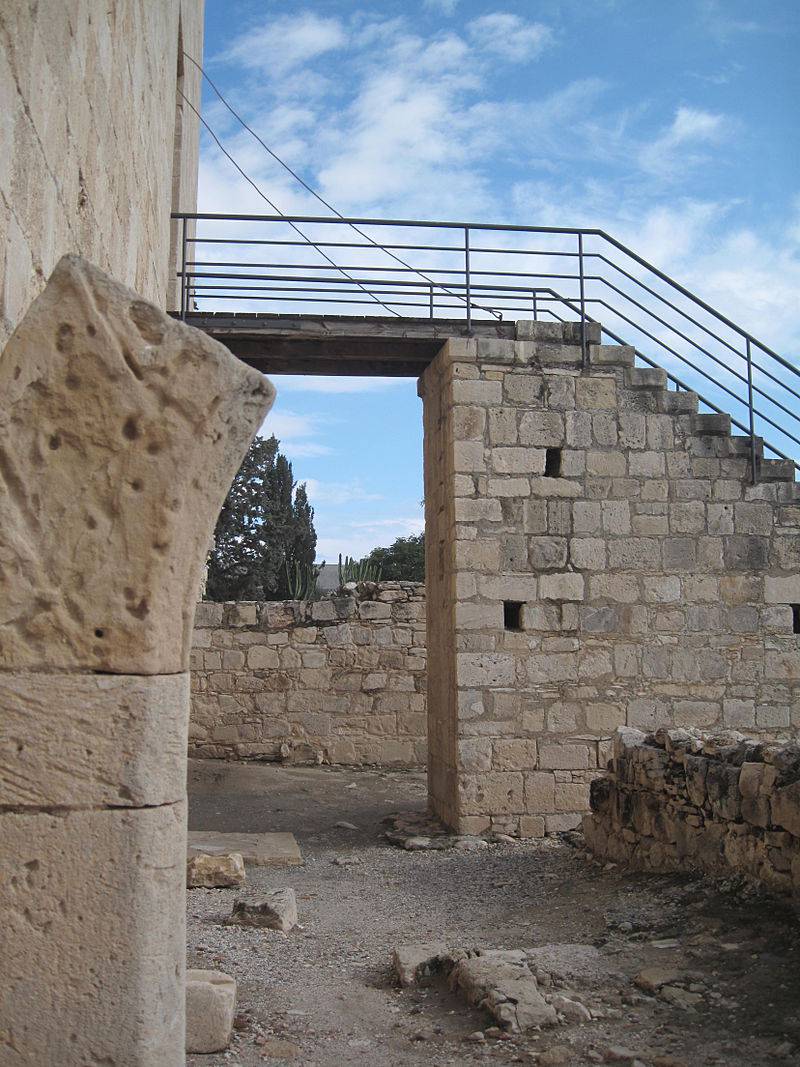
Bridge to the second floor.
The main rooms were located on the third floor. There was a huge room of two rooms. Here, too, there is a large fireplace with the arms of De Maniak, who cared for his comforts so much that he ordered in the northern part of the castle to arrange for himself even a separate toilet in the thickness of the wall.
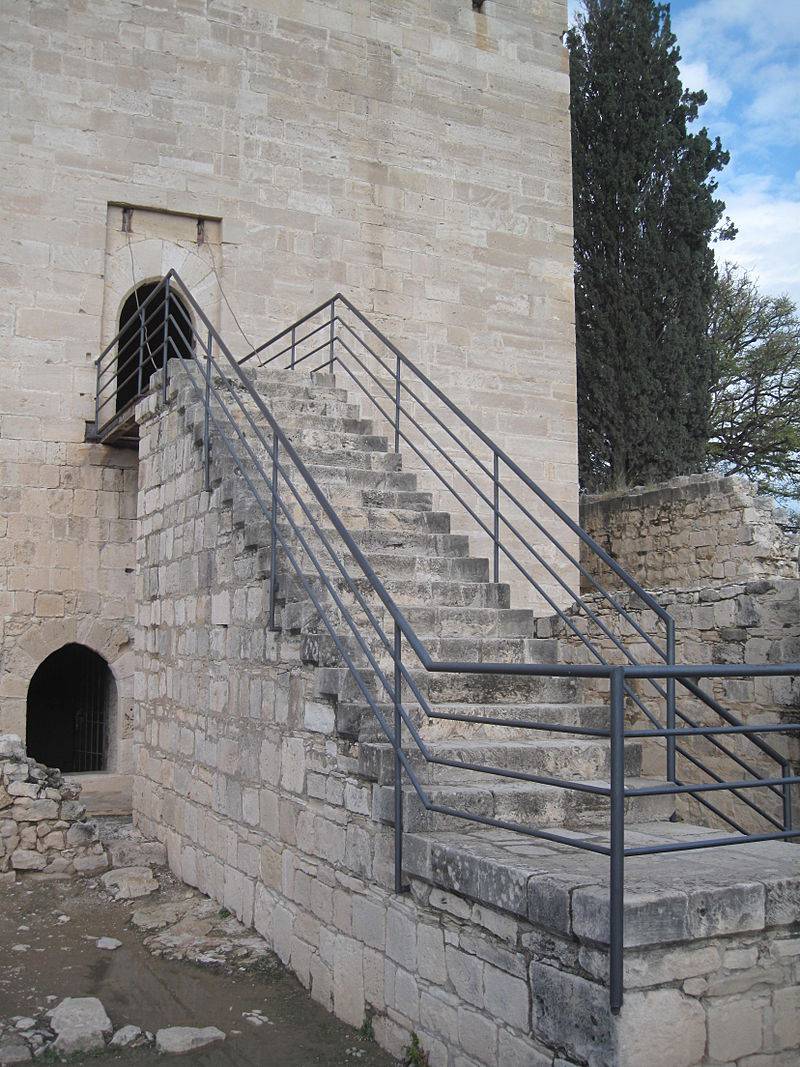
Entrance to the first floor and stairs to the second.
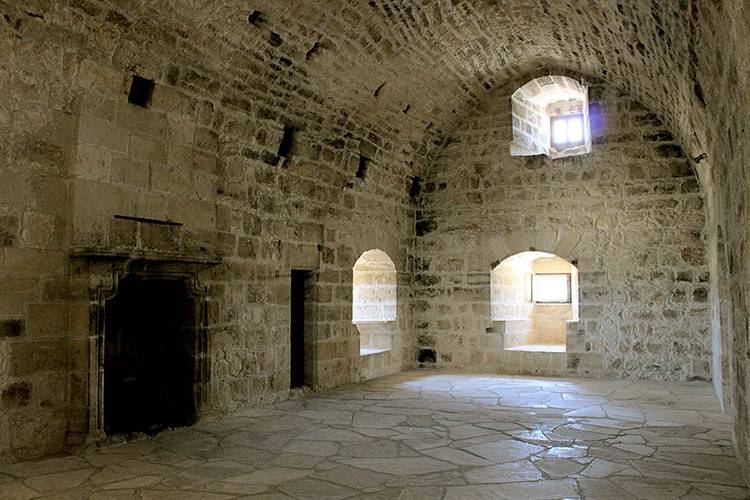
Inside the castle is not too light, but not hot.
Residential floors were communicated with a narrow spiral staircase. They were built in such a way that a person climbing up on them would go counter-clockwise. What for? But why, so that it would be inconvenient for him to wield a sword! And on the contrary, it was very convenient for those who were on top!
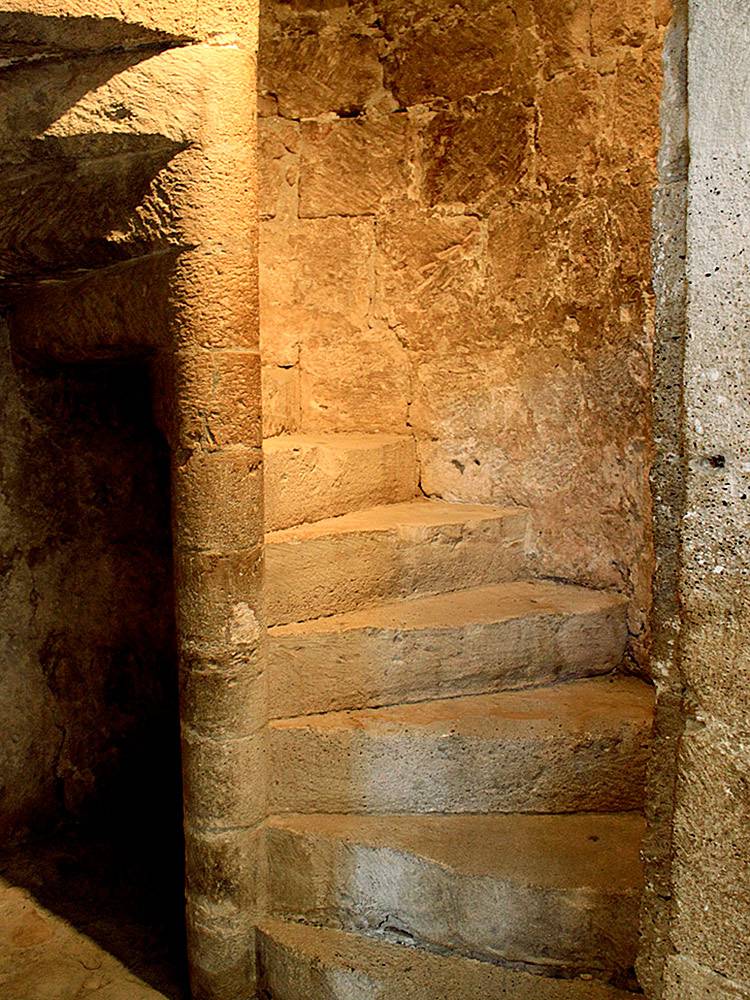
Here it is, this spiral staircase. Being at the top, waving a sword is convenient. Bottom - no!
The roof of the castle is flat and flat, and narrow loopholes are arranged all around its perimeter. An elegant balcony directly above the hanging bridge and the entrance to the castle was also made not for beauty. There is no floor in it, but there are wide slits looking down. It was through them that it was possible to throw stones at the heads of the attackers, and pour boiling olive oil and boiling tar - in a word, everything that is not very useful to a person!
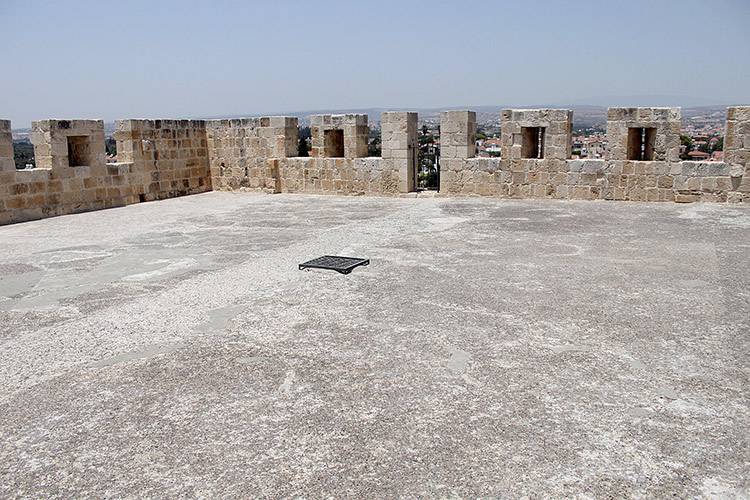
“You can dance on the roof, and this is the main thing!” - it’s funny that I remembered these words from the song of two gangsters from the movie (very old!) About Carlson. But once on the roof of the Kolossi castle, one cannot say otherwise.
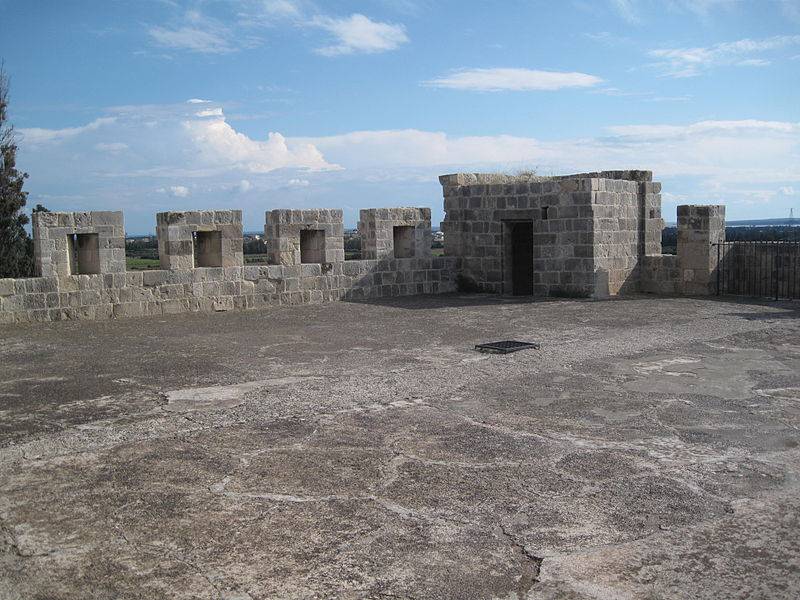
But this is the exit to the roof. And what about loopholes ?!
Going down, you need to go to the castle on the east side and look up. Almost in the very center of the wall you can see a beautiful marble panel in the shape of a large cross. In the center is the coat of arms of the Lusignan family, who ruled in Cyprus at the time when this castle was built there. The upper coat of arms on the left inside the shield is the coat of arms of the Kingdom of Jerusalem: a large cross framed by four small ones. The upper right is, in fact, the Lusignan coat of arms: a crowned lion is a ramp ("a rising lion") against the background of three horizontal "belts." Below, on the left, the coat of arms of the island of Cyprus is another red rampan lion on a golden shield. At the bottom right, the lion is also red, but on a silver background is the emblem of Armenia. All four parts of the shield demonstrate the power of the Lusignan kings: in fact, since 1393, the kings of Cyprus have also become the kings of Jerusalem and Armenia. This emblem was minted on Cypriot coins at that time.
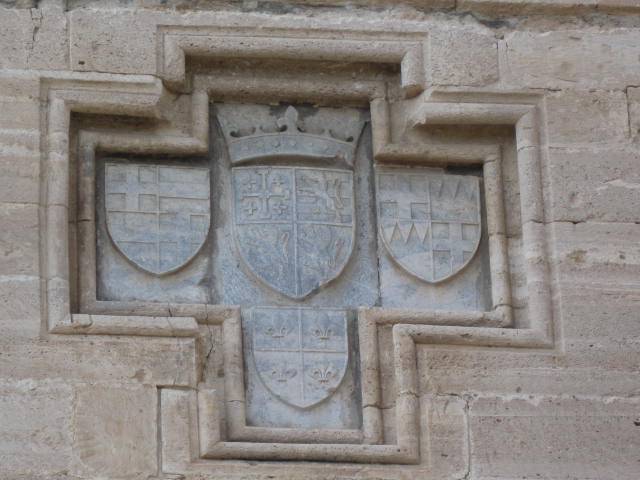
"Armorial Cross" Lusignan.
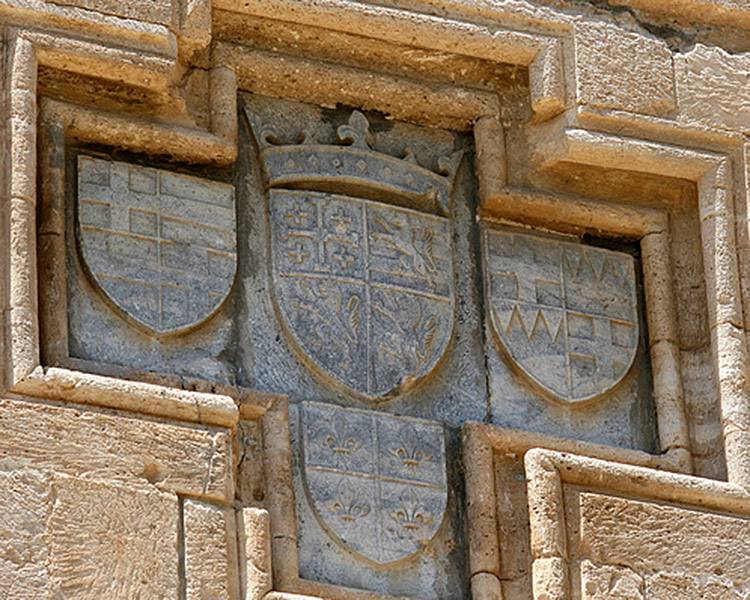
In the photo this is not visible, but archaeologists say that just on this panel the year of construction of the castle is indicated - 1454. Louise de Maniak at that time was in charge of the construction of the castle, and his coat of arms is also present here, but at the very bottom of this cross (the man knew his place, so to speak!). Above all these coats of arms is visible an elegant crown, a symbol of royal power over the castle.
Land ownership, the center of which was Kolossi Castle, has long been considered one of the richest crusader estates. Already in 1468, the owners of the castle had to pay the treasury of the order, which was already in Rhodes, 4000 ducats income tax on income from this area - a very large amount for that time. And when in the 1488 year, all the ownership of the hospitallers, including the Kolossi region, was transferred to the management of the Venetian Cornaro family, they had a 41 village. Only from these villages the annual income reached 8000 ducats. Then George Cornaro managed to convince his sister, Queen Catherine Cornaro, to renounce Cyprus in favor of the Venetian Republic. True, when the Ottomans conquered the island in 1571, the Cornaro Kolossi family lost, although these lands remained in their possession according to titles. Rod Cornaro ended his existence in the 1799 year, but then the title and the land in the Kolossi area attempted, albeit unsuccessfully, to obtain for himself a certain Conte Mosenigo, who married one of the heirs of this genus.
Once again, the castle came alive 18 September 1959 of the year. Then an unusual ceremony was held here, led by the English Governor of Cyprus, Sir Hugh Foote, and the essence of which was to honor the memory of the Brothers-Hospitallers, who, as before, continued their charitable activities on the island as before. And here it should be noted that the Knights Hospitallers earned a lot just not with a sword, but thanks to the “sugar factory”, which was located right next to the castle!
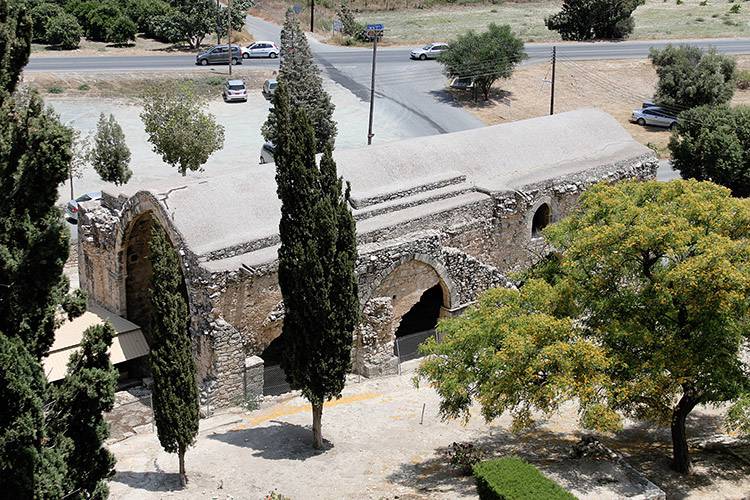
And this is exactly the same "candle factory". He only did not make candles desirable for Fyodor’s father, but much more valuable sugar in the Middle Ages!
The fact is that in the XII century, many sugar cane plantations were divided into lands belonging to the castle. This reed requires a lot of water, but in Cyprus it is not enough, but just in this case there was enough water - it was taken from the Kuris River, which flowed very close. Initially, the plantations belonged to John, then were rented by the Venetians. But there was not enough water, and because of the water, they both quarreled, litigation began, and as a result, the Hospitaller had to abandon these profitable plantations in favor of the Venetians, Martini brothers. That it was worth it was obvious. Indeed, until the XIX century, sugar was produced only from sugar cane. Initially, it began to grow in India and Indochina, and then in China. The first sugar cane sugar learned to extract the Arabs. Cane sugar came to Europe along with the crusaders who had returned, but only Cyprus, Rhodes, Crete and Sicily were suitable for its cultivation near Europe.
In Cyprus, sugar cane came from Egypt in the 10th century and was the main agricultural crop of the island until the 16th century. Only in Kolossi and Akrotiri, about 400 people worked at the enterprises for its processing! Ready sugar was sold to Europe and exported to Beirut.
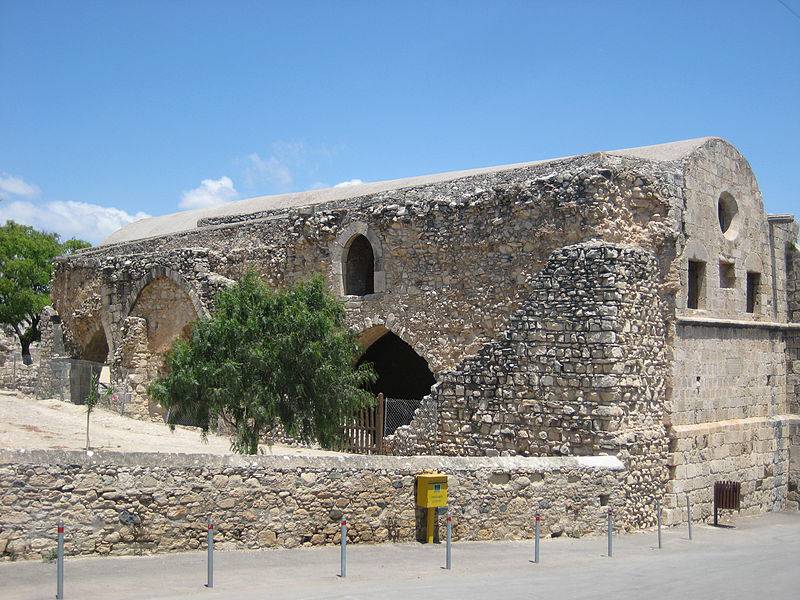
The “plant” was built on the east side of the castle and was a room of three rooms in 150 sq.m. Here you can see the remains of the old mill, where crushed reed. On the southern wall of the “factory” there is an inscription that this building was put in order in 1591 year, “when Murad was a pasha of Cyprus,” that is, during the Ottomans. The Turks also built a huge water pipeline, quite worthy of the ancient Romans and supplying water and fields, and sugar production. For example, water triggered the mill wheel, which turned the millstone millstones, that is, manual labor, as far as possible, was mechanized.
An interesting technology for producing sugar of that time. The dark viscous mass of a rather unsightly look, obtained after pressing, was boiled for many hours, but the first sugar turned out to be ... black! Then he was boiled several more times, and each time he became whiter and whiter.
Then followed spill forms. Only at the plant in Kukliya found 3800 completely identical clay forms for sugar, which once again says that sugar production was quite industrial in nature! Obviously, the production of sugar emitted not quite pleasant flavors and this is how the inhabitants of the castle put up with it? Did you go away to the sea or the mountains of Troodos? Or maybe they lived by the principle - “good money doesn't smell!”
Highly refined granulated sugar was considered the most expensive and valuable product. The dark-colored sugar was “second-rate”. The cheapest was considered sugar syrup. Moreover, the role of Cyprus as a sugar producer especially increased after the 1291 year, when Christians lost Palestine. Moreover, Cyprus sugar was especially appreciated in Europe - this type of sugar was the most popular and at the same time was the most expensive.
With the discovery of America in the 16th century, the situation changed dramatically and sugar production in Cyprus began to decline gradually. From American cane, sugar was obtained of higher quality. But then, in Europe, the demand for cotton gradually began to grow, and it was he who occupied the fields of Cyprus from the middle of the 17th century.
R.S. Another argument in favor of Cyprus is that there is no need to apply for a visa. The attitude towards Russians there is very good. In any case, there are often three flags flying here and there: England, Cyprus itself and Russia, so sometimes you forget that Cyprus was once a colony of the British. The picture is complemented by the names of the Pyaterochka and Magnit stores, the advertising of our banks along the roadsides, and the inscriptions like “We speak Russian!”, So sometimes it seems that you have not left at all.
Information